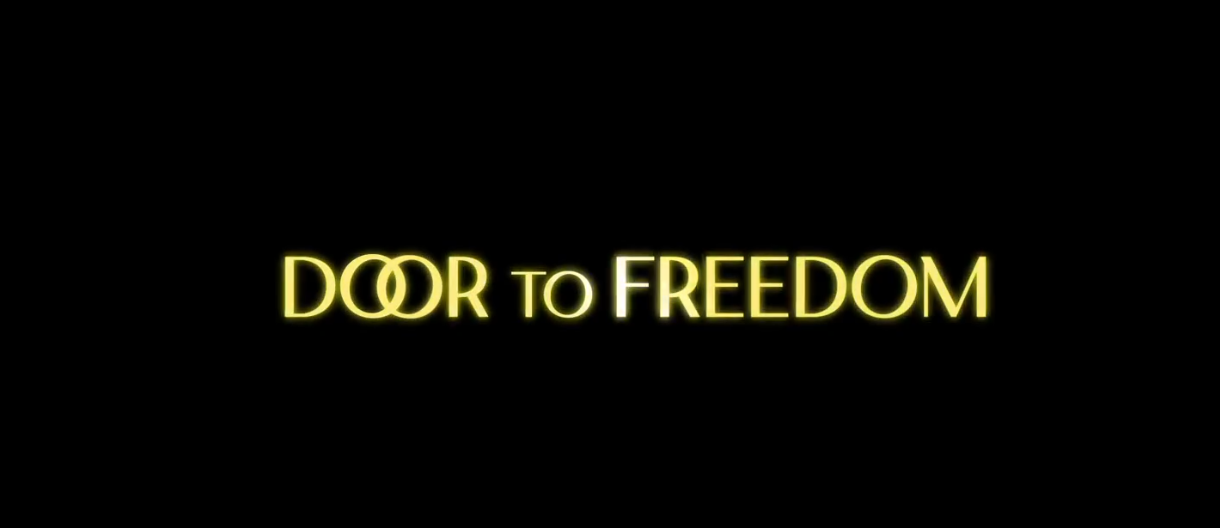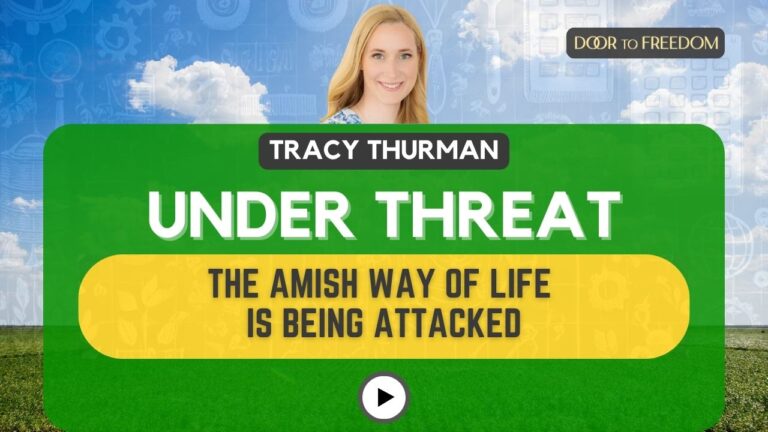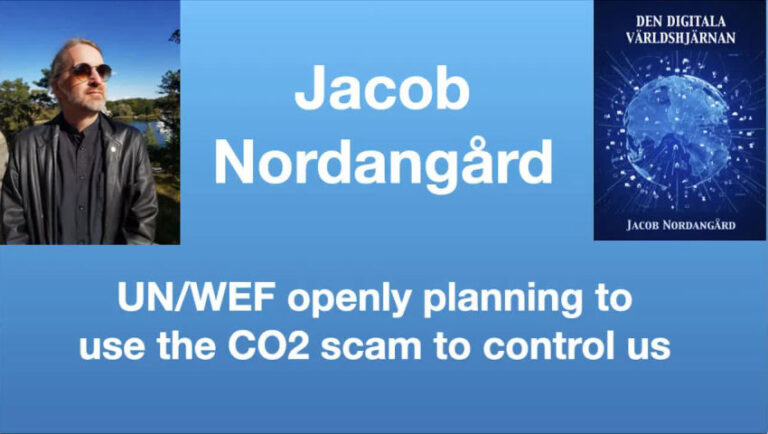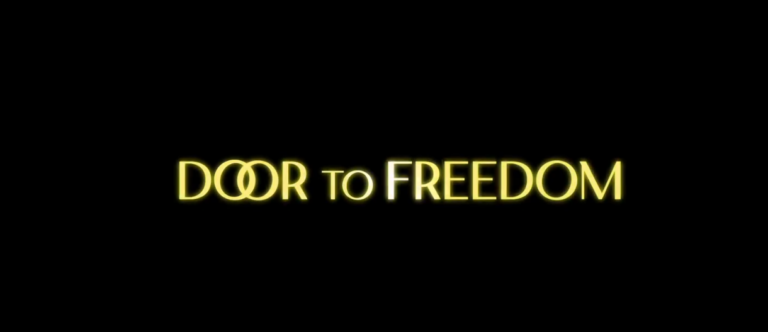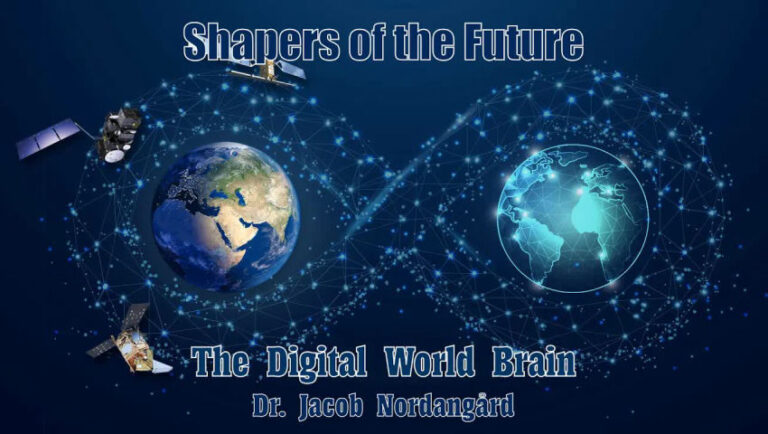Dear Friends,
You have probably heard that the United Nations is conducting its Summit of the Future next Sunday and Monday. The goal of the UN Secretariat and the powers behind the UN throne are trying to gain agreement to move ahead with UN 2.0, reorganizing the UN.
Furthermore, and more important, the UN is making a power grab very similar to the one sought by the WHO, but broader. In addition to being able to declare an emergency for pandemics or biowarfare, Secretary Guterres would be able to call emergencies for anything he wanted, without restriction. Like a climate emergency. Or any "black swan" event.
It is important that people be aware of what is happening. I have written a 2-minute introduction to the Pact for the Future, to which the UN seeks a consensus agreement to move forward with its plans (below).
Below that, I provide additional details about what the Pact is doing for those who are interested, making ten important points about the Pact, and providing the paragraph number or Action Item to which each point refers.
The United Nations system is captured by elites and is being used to try and gain unprecedented control of the world's people. The best and simplest way to handle this is for nations to exit the UN system, including the WHO. You might want to suggest this to your national leaders and representatives.
Next week, I will be in Japan at the International COVID Summit 6, which will feature discussions of new, dangerous COVID self-amplifying RNA vaccines, already licensed in Japan, which contains the code to reproduce mRNA–so the recipient's body not only makes the toxic spike protein but also the mRNA to produce it. Oh my!
I will not write a newsletter next week, but the week after I will explain more about these newfangled vaccines and what I learned in Japan.
Until then,
Meryl Nass, MD
Perhaps unsurprisingly, The UN's Pact for the Future has many similarities to the WHO's initially proposed IHR amendments and pandemic treaty.
Both the Pact and the WHO's draft treaties would give the head of each agency the sole authority to determine global emergencies, declare them, gain unlimited powers to manage them and to decide when the emergency is over. Neither organization issued any standards or guidelines for making declarations, or limiting the powers that would accrue to the heads of the organization whenever an emergency declaration was made.
In other words, both the WHO and UN proposals would place unlimited, dictatorial powers in the hands of each agency head.
Both the UN and WHO proposals call for censorship of misinformation alongside freedom of speech–despite knowing that these two are mutually exclusive.
All these documents are deceptive. The proposed pandemic treaty stated there would be no surrender of national sovereignty, while in later paragraphs demanded such surrender. The UN Pact for the Future calls for the mobility of talent while simultaneously demanding no brain drain.
Each agency called for using technology and scientific advancements to help developing nations, yet paradoxically called for enforcing intellectual property rights.
The UN echoes the demands of the WHO for nations to comply with the ongoing pandemic preparedness agenda, despite its expansion of surveillance and impingement on privacy rights. Each agency demands efforts to restore trust in science.
Diplomats and national leaders are being asked to agree to unspecified transformations of global governance and the imposition of an entirely new global financial architecture.
Compliance is to be obtained by using "mandated intergovernmental processes, where they exist," by "strengthening implementation of environmental agreements" and by engaging national lawmakers to embed UN policies in their domestic legislation.
While the Sustainable Development Goals are a recent invention, the UN tries to make us believe they are an original pillar of the UN. They are not. The Pact goes on to assert that the Sustainable Development Goals are the central objective of multilateralism and the center of the reform of the international financial architecture.
The citizens of the Earth did not vote for the Sustainable Development Goals, nor did they vote for the UN Secretary-General or the WHO Director-General to be granted dictatorial powers over the planet, nor for a new financial architecture.
The Pact for the Future, this Summit and these two agencies seek to impose illegitimate authorities on the people of this planet. As 26 US Governors said recently about the WHO, we will not comply. Not with any of it. Not now, not ever.
In 10 points, what does the Pact for the Future tell us?
Meryl Nass, MD
September 15, 2024
1. Global governance is to be transformed and strengthened
"We will transform global governance," which will lead "to a brighter future for all of humanity." But this will require greater international cooperation and compliance with international law. [paragraphs 3-5, and Action 41]
"We will strengthen the UN system" [Action 48]
2. Assuring compliance
"Where mandated intergovernmental processes exist, we will use them to advance this agenda." [paragraph 17]
"We will strengthen international cooperation for the environment and the implementation of and compliance with our multilateral environmental agreements to deliver on our ambition to protect our planet." [Action 58]
"Deepen United Nations’ engagement with national parliaments in United Nations intergovernmental bodies and processes, in accordance with national legislation, including through building on the efforts of the United Nations and Inter-Parliamentary Union to engage parliamentarians to maintain support for the implementation of relevant UN agreements and resolutions." [Action 59]
3. Dictatorial authority sought for the UN Secretary-General, echoing the plan for the WHO's Director-General in the Pandemic Treaty and proposed IHR amendments
Echoing the WHO's pandemic aspirations, the Pact seeks to give the UN Secretary-General the sole authority to operationalize an "Emergency Platform," for any type of emergency he designates, to decide which emergencies warrant this declaration, to decide when to trigger this authority, and to determine how to manage the emergency. [Action 57]
4. Sustainable Development to be at the center of multilateralism (i.e., global governance) and at the center of a new global financial architecture
While "development" was one of the original 3 pillars of the UN, sometimes listed as 4 pillars, the Pact now claims that "Sustainable Development" is one of the essential 3 pillars of the UN. [paragraph 9] This is a gross misrepresentation, because the term "sustainable development" is used interchangeably with the Agenda for Sustainable Development, Agenda 2030 and the 17 Sustainable Development Goals, none of which existed when the UN was founded, and they have an entirely different meaning than the general term "development."
The Pact claims that sustainable development is "a central objective of multilateralism" [paragraph 10] and furthermore, "we will accelerate reform of the international financial architecture to address the challenges of today and tomorrow… the reform of the international financial architecture should place the 2030 agenda at its center" [Action 50]. But the world's citizens never voted to make Agenda 2030 the centerpiece of multilateralism, nor have they asked for the creation of a wholly new financial architecture, for which the UN lacks expertise and probably also lacks authority.
While the Pact acknowledges in paragraph 18 that "the achievement of the sustainable development goals is in peril. Progress on most of the goals is either moving too slowly or has regressed below the 2015 baseline," paragraph 19 states that nations are to reaffirm that "the 2030 agenda for sustainable development is our overarching roadmap for achieving development…" Why would anyone, let alone the entire world, follow a roadmap that has failed to yield progress during the past 9 years?
5. Suspicious goals for health
The Pact specifically desires to ensure universal access for sexual and reproductive health and for vaccinations, but fails to make similar assurances for access to primary health care. [paragraphs 27 and 63]
6. References to many prior agreements, without specifying what in these other documents is being referred to, make the Pact deliberately obfuscatory
Several paragraphs are indecipherable, referring to up to 3 different prior agreements but failing to specify what precisely in those agreements is being referred to. [paragraph 28 (a)]
There is use of language to conceal the actual meaning of what is being discussed. For example, "Deliver on our agreed commitment to hold and reverse biodiversity loss by 2030 and implement all multilateral environmental agreements." This is actually a demand to appropriate private land for the Natura 2000 and 30 by 30 initiatives. [paragraph 29 (e)]
7. Doubletalk: the UN wants to have it both ways and hopes we don't notice
The UN uses doubletalk, calling for censorship and free speech at the same time. [paragraph 39(g)]
In similar doubletalk, it calls for "talent" mobility at the same time it calls to prevent a brain drain. [paragraph 54 (c)]
A third instance of doubletalk is that the Pact calls for technology to help developing countries, while calling for enforcement of intellectual property rights. [paragraph 56 and Action 33]
8. The Pact echoes the WHO's Biosecurity Agenda, and like the WHO Pandemic Treaty and IHR amendments, includes both censorship of information and the need to promote trust in science (which are apparently necessary elements to achieve global control)
The Pact is in line with the WHO's Biosecurity Agenda [paragraph 48 (c)] and desires to build "trust" in science [paragraph 54 (a)] harkening back to the WHO's COVID agenda, which controlled and censored "the science" the public was allowed to hear.
9. Outlandish aspirations
Some Pact aspirations are frankly outlandish, such as "achieve a world in which humanity lives in harmony with nature." [paragraph 29(a)]
Or, "We believe there is a path to a brighter future for all of humanity, including those living in poverty and vulnerable situations. Through the actions we take today, we resolve to set ourselves on that path, striving for a world that is safe, peaceful, just, equal, inclusive, sustainable and prosperous, a world in which human wellbeing, security and dignity and a healthy planet are assured." [paragraph 4]
10. Hypocrisy
While the expressed aspiration is to end war crimes, use of starvation for war, genocide, crimes against humanity, etc., we hear little about meaningful UN actions in this regard, despite the continuing occurrence of such atrocities. [paragraph 35 (g,h)]
Conclusion
The Pact for the Future is an overblown, repetitive, redundant, dishonest document. Unlike a normal treaty, it drowns us in generalities and tucks its few specifics into dark corners, relying on vague references to other documents to provide the actualities.
It asserts, without justification, that the Agenda for Sustainable Development must be at the center of multilateralism and at the center of a wholly new financial architecture.
While replete with outlandish and vague aspirations and doubletalk, buried deep within the document is a frightening proposal first floated in the UN's Policy Brief 2 of 2023.
This proposal seeks agreement of the UN General Assembly (UNGA) to create an "Emergency Platform" which would be activated whenever the UN Secretary-General (S-G) decided there was a "global shock" of any kind affecting more than one country. This could be a climate emergency, supply chain emergency, pandemic or 'black swan' event. The Secretary General and the "Emergency Platform" would then take over management of the emergency, deciding when to initiate their actions and when to end them. There are NO standards specified in the Policy Brief or the Pact that would limit the UN's actions in any way. There is no requirement for agreement by affected nation states, the UNGA or the Security Council.
This would provide the UN S-G with more power than any human being has ever had, to do with as he wishes. While on the one hand it is a preposterous and unjustified power grab, and is unlike anything the UN has previously attempted, the UN and the powers behind the UN are deadly serious about gaining this global authority over the entire world.
The Pact is a dire threat to every nation, and it must be stopped.

